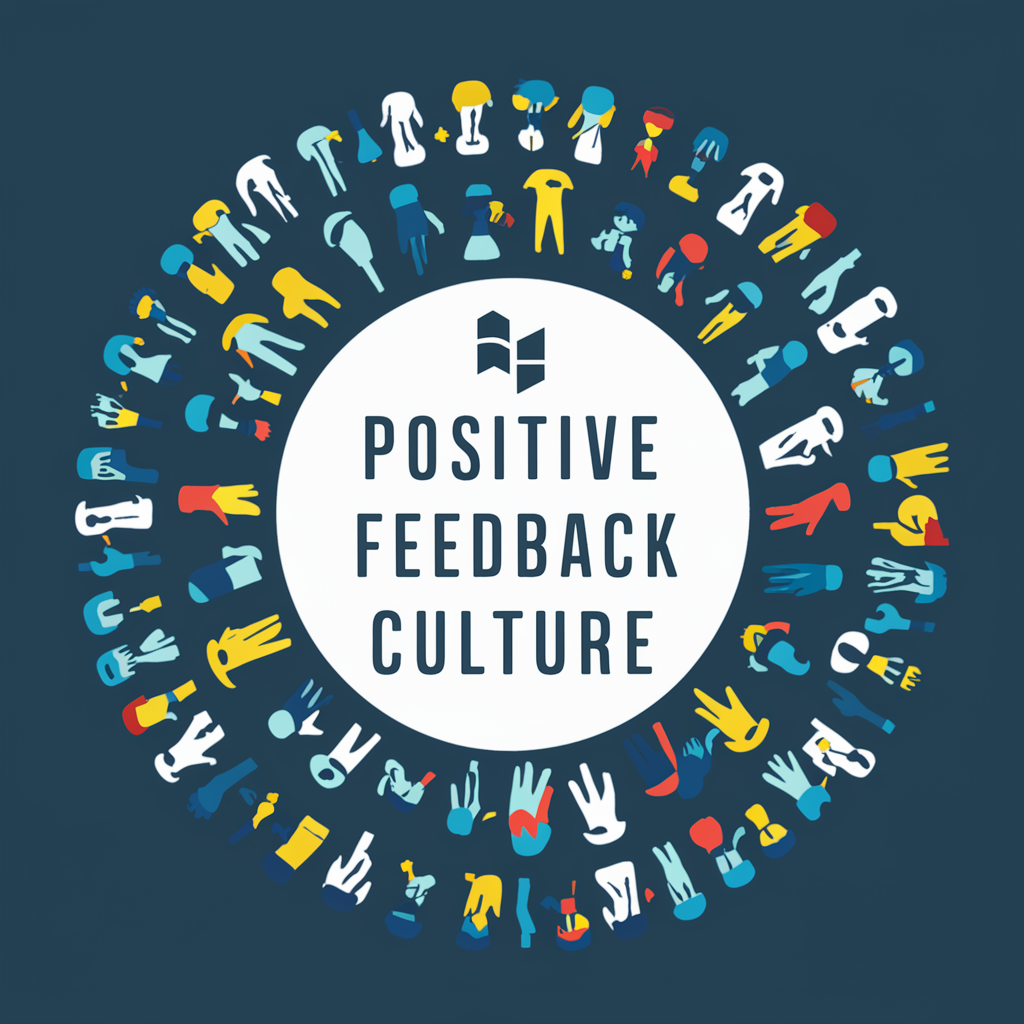How to Implement a Positive Feedback Culture?
Implement a Positive Feedback Culture

In a world where criticism often takes the spotlight, positive feedback remains a powerful yet underappreciated tool in cultivating a healthy and productive work environment. While negative feedback might have its place in driving improvement, positive feedback serves as the nurturing force that fuels individual growth and team dynamics.
Differentiating between Positive and Negative Feedback

Positive feedback, contrary to its name, is not just about praise and compliments. It involves recognizing and reinforcing specific behaviors, actions, or accomplishments that contribute positively to the individual or team’s goals. It’s not a generic “good job” but rather a detailed acknowledgment of what was done well and how it impacted the project, team, or organization.
On the other hand, negative feedback tends to focus on areas needing improvement, often highlighting mistakes or shortcomings. While necessary for growth, it should ideally be balanced with positive feedback to maintain morale and motivation.
The Psychological Impact of Positive Feedback
Positive feedback is more than just a fleeting feel-good moment. It has profound psychological effects on individuals and teams. When someone receives positive feedback, their brain releases dopamine, a neurotransmitter associated with pleasure and reward. This biochemical reaction reinforces the behavior or action, making the individual more likely to repeat it in the future.
In a team setting, positive feedback fosters a sense of belonging and value. Employees who feel appreciated are more engaged and committed to their work. Furthermore, the reinforcement of positive behaviors through feedback helps shape a culture that aligns with the organization’s values and goals.
The Role of Positive Feedback in Employee Engagement and Motivation
Employee engagement is a key driver of organizational success, and positive feedback plays a pivotal role in fostering it. When employees receive regular positive feedback, they are more likely to feel connected to their work, their colleagues, and the company’s mission. This sense of connection leads to increased motivation and a willingness to go above and beyond.
Moreover, positive feedback enhances self-esteem and self-efficacy. Employees who consistently receive acknowledgment of their strengths and contributions tend to develop a stronger sense of self-worth and confidence in their abilities. This confidence extends to their work, resulting in higher job satisfaction and improved performance.
The Core Elements of a Positive Feedback Culture

Creating a positive feedback culture goes beyond sporadic compliments. It involves a holistic approach that integrates several key elements to ensure that feedback becomes an intrinsic part of the organization’s DNA.
Open Communication Channels
The foundation of a positive feedback culture is built on open and transparent communication. When employees feel safe expressing their thoughts and opinions, both positive and constructive feedback can flow freely. This requires leaders to create an environment of trust where employees are encouraged to voice their ideas without fear of repercussions.
To establish this trust, leaders should actively listen to feedback, acknowledge it, and take appropriate actions. This not only encourages employees to share their insights but also demonstrates that their contributions are valued.
Regular Feedback Practices
For a positive feedback culture to thrive, feedback cannot be a sporadic occurrence. It should be ingrained in the organization’s routines. Setting up a consistent feedback schedule, whether through regular one-on-one meetings or team huddles, ensures that feedback becomes an expected part of the work dynamic.
Additionally, organizations should provide opportunities for both formal and informal feedback. Formal feedback might come through performance evaluations, while informal feedback can occur during project debriefs, brainstorming sessions, or casual interactions.
Constructive Feedback Guidelines
Constructive feedback is a crucial aspect of any feedback culture. It’s about helping individuals identify areas for improvement without demotivating them. To make this work, feedback providers should focus on specific behaviors or actions rather than making generalizations about a person’s capabilities.
Moreover, feedback should be actionable. Instead of vague statements like “You did great,” provide specifics such as “Your concise explanation during the presentation helped the team understand the complex concept clearly.” Actionable feedback empowers individuals to replicate positive behaviors and improve in targeted areas.
Recognition and Celebration
While constructive feedback is essential, recognition and celebration play an equally vital role. Recognizing achievements and milestones, both big and small, reinforces the organization’s commitment to valuing its employees. This can be achieved through public praise, team celebrations, or even rewards and recognition programs.
Acknowledging efforts boosts morale and encourages individuals to continue striving for excellence. It also sets an example for others to follow, promoting a culture where accomplishments are celebrated collectively.
Steps to Implement a Positive Feedback Culture

Leadership Commitment
Leadership commitment is the cornerstone of successfully implementing a positive feedback culture. Leaders set the tone for the entire organization, and their actions speak louder than words. When leaders actively engage in giving and receiving feedback, they signal its importance to the rest of the team.
Leading by example means showing vulnerability in receiving feedback and demonstrating the willingness to learn and improve. When employees witness their leaders valuing feedback, they are more likely to embrace it themselves. This commitment should extend beyond a mere endorsement – leaders should actively participate in training sessions, provide feedback themselves, and create a safe space for open dialogue.
Training and Education
Implementing a feedback culture requires individuals to possess the skills and understanding necessary to provide effective feedback. Conducting workshops and training sessions on feedback techniques equips employees with the tools they need to deliver constructive and valuable input.
These sessions can cover topics such as active listening, framing feedback positively, and handling difficult conversations. By enhancing employees’ feedback skills, organizations empower them to communicate more effectively, resulting in a more cohesive and collaborative work environment.
Feedback Tools and Technology
In today’s digital age, technology can play a significant role in fostering a positive feedback culture. Introducing 360-degree feedback software and tools simplifies the process of giving and receiving feedback. These platforms allow for timely and efficient communication, making it easier to recognize accomplishments and provide constructive insights.
Feedback technology can also facilitate data collection and analysis, enabling organizations to track trends, identify areas for improvement, and measure the impact of the feedback culture over time. This data-driven approach adds a layer of accountability to the feedback process.
Customization to Organizational Needs
Every organization is unique, with its own culture, values, and challenges. As such, the implementation of a positive feedback culture should be tailored to align with the company’s specific needs and goals. What works for one team might not work for another, and flexibility is key.
Customization involves understanding the different dynamics within various departments and teams. Some teams might benefit from more frequent check-ins, while others might prefer a less formal approach. By recognizing these nuances and adapting feedback practices accordingly, organizations ensure that the feedback culture resonates throughout the entire company.
If you are thinking about investing in feedback software, and you are using Microsoft Teams on a daily basis, the best feedback software for you would be Teamflect. With an extensive library of Microsoft Teams integrated feedback templates, it makes the exchange of feedback a breeze!

 dscary
dscary